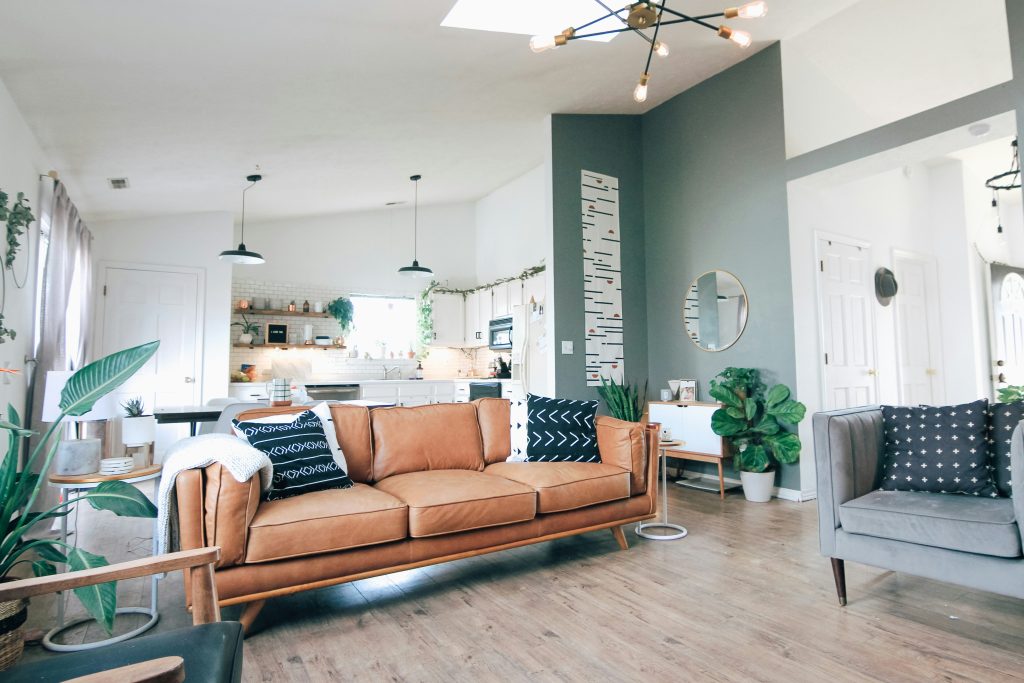It’s hard to miss all the warnings about how we need to be living more sustainably – and with more than a quarter (26 per cent*) of harm to the environment coming from our homes, it’s a good place to start making changes. It’s also often easier on the wallet to have a more sustainable home.
However, with many sustainable upgrades – such as solar panels and heat pumps – having hefty price tags, it’s understandable that many of us aren’t in a position to make the changes. But according to MyBuilder.com, the reliable way to hire tradespeople, there are some sustainability hacks that are effective and won’t break the bank.
From taking advantage of government grants to install more sustainable heating systems, to collecting rainwater to repurpose, there are many ideas that could work on a variety of budgets and in a variety of homes.
Andy Simms, from MyBuilder.com, said that many homeowners could be surprised by how affordable some sustainability improvements could be.
“While it’s obvious that certain improvements, such as installing solar panels or replacing all your windows, can be very expensive, there are many other less expensive options to consider.
“From better insulation to collecting your rainwater, there are many excellent ideas to implement in your homes. Some require expert help but there are others you can do yourself, so why not research your options?”
Here is MyBuilder.com’s guide to some simple tips to make your home more sustainable, without breaking the bank.
Air source heat pump
Recent data from MyBuilder.com found that 54 per cent of Brits don’t know how much a boiler would cost. Although installing a new heating system is undeniably expensive, there are grants available that make it a much more realistic proposition. You can get up to £7,500 towards a boiler with the Government Boiler Upgrade Scheme, which is valid until 2025.
Insulate your home
Having the best possible insulation is invaluable for a comfortable home. It will keep you warm in winter, lowering your energy bills, and cool in summer, meaning you might not need fans or air conditioning units. This is all great for your bills, as well as the environment. Insulating your home effectively requires a professional, but if you are looking for cheaper options, using draft excluders and ensuring good seals on windows and doors will all help.
Low VOC paints
It’s inevitable that we need to refresh our walls now and again, but paint can be very harmful to the environment as well as to the inhabitants of your home. When the time comes to paint, choose one that is low in volatile organic compounds (VOC). These paints don’t use fossil fuels and don’t release toxic fumes into your home.
Rainwater harvesting system
The rain has barely stopped this year so far – but there are some bonuses to this. Rainwater can be a good source of water for your garden, and even for inside your home. Harvesting this commodity can be easy or more complex, depending on how far you want to go. For a start, gutters must be arranged in a way that they efficiently funnel water from your roof into a suitable container, such as a water butt. If you want more use from your water, experts can add filtration systems and underground pipes to a storage tank.
Hang your clothes
Tumble dryers are expensive to run and terrible for the environment – and your garments. Air drying your clothes is a much better solution, but with space being an issue for many people, as well as damp, this can be tricky. Consider getting a tradesperson in to build some bespoke hanging areas – in high ceilings above the stairs, a fold away option in your laundry room, or even outside windows – there’s plenty of space to consider.
Reuse your coffee grounds
Coffee grounds are actually a hazard to dispose of – they should never be poured down the sink as they can cause blockages, as well as contributing to fatbergs in sewers. But did you know they could be reused as fertiliser for your plants? Using your grounds for your plants removes the problem of how to dispose of them safely, and provides a safe and effective alternative to chemical fertilisers and pesticides. The grounds have nitrogen, phosphates and potassium – all good for plant growth and soil health.
Living roof
If your outside area is small, a living roof is a great way to help the environment. Not only this, but done properly they can provide shade, remove heat from the air, and reduce temperatures of the roof surface and surrounding air. Using green roofs in cities can moderate the heat island effect (where urbanised areas experience higher temperatures due to the amount of buildings), particularly during the day. Green roof temperatures can be 30-40°F lower than those of conventional roofs. Consult an expert to get an idea of costs.
Boiler serviced regularly
Getting a boiler service regularly might sound obvious, but according to research by MyBuilder.com, 23 per cent of homeowners chose to skip a service. This is damaging not just to your boiler, but can even invalidate your insurance should something go wrong. Maintaining your boiler means it will run efficiently, which is best for both your bills and the environment.



